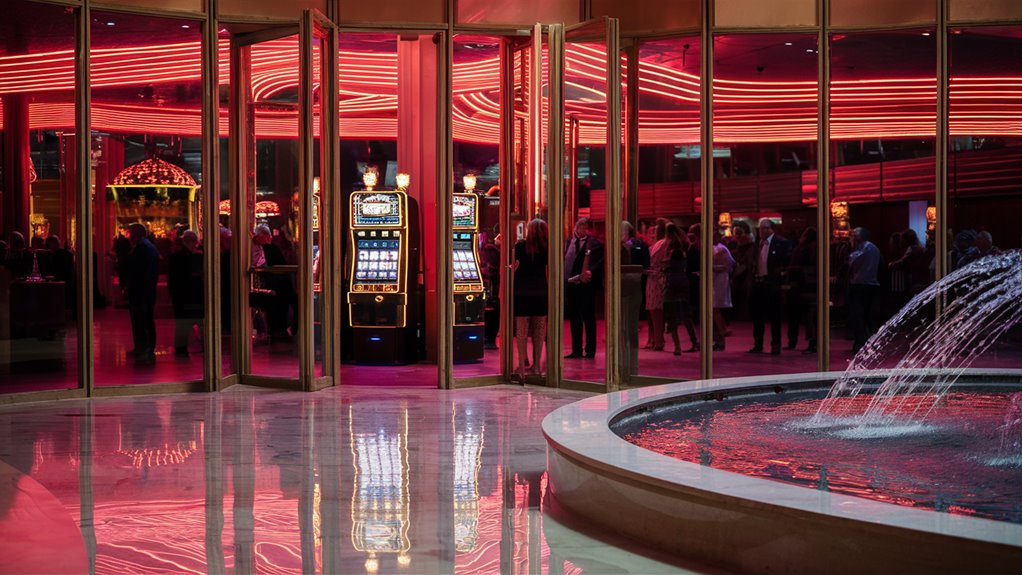
How Do Casinos Use Behavioral Science to Influence Player Decisions?
Key Takeaways
- Casino marketing leverages psychological triggers through strategic design elements
- Environmental factors like lights and sounds activate specific neural responses
- Reward systems tap into fundamental human decision-making patterns
- Understanding these techniques helps players make more informed choices
Behavioral science plays a central role in how casinos design their marketing and player experiences. The combination of environmental psychology and reward mechanisms creates powerful behavioral triggers that influence decision-making patterns.
Strategic Environmental Design
- Carefully positioned lighting patterns
- Orchestrated sound effects and music
- Optimal gaming floor layouts
- Color psychology in décor choices
Reward System Architecture
- Variable reinforcement schedules
- Achievement-based incentives
- Loyalty program structures
- Social proof elements
Neural Response Triggers
- Dopamine activation through near-wins
- Anticipation building through progressive rewards
- Memory formation through multisensory stimulation
- Pattern recognition exploitation
The effectiveness of these behavioral techniques stems from their alignment with natural human psychological responses. Even when players understand these mechanisms, the combination of environmental factors and reward systems continues to influence behavior through established neural pathways.
Understanding Player Psychology
- Risk-reward evaluation processes
- Loss aversion responses
- Social validation seeking
- Achievement motivation
This systematic approach to behavioral influence demonstrates how casinos create immersive environments designed to engage players on multiple psychological levels. Recognizing these techniques helps develop more conscious decision-making strategies while gambling.
The Psychology of Near-Misses
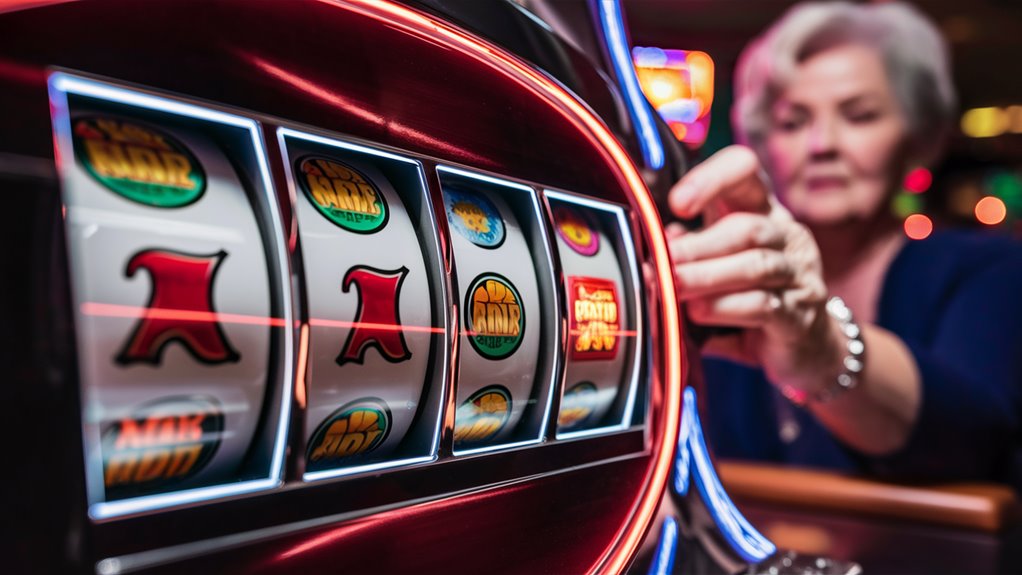
How Do Near-Misses Affect Gambling Psychology?
Key Takeaways:
- Near-misses trigger similar brain reward responses as actual wins
- Casino games intentionally program frequent near-misses to encourage continued play
- Visual “almost winning” displays create powerful psychological engagement
The Brain’s Reward Response
Near-misses in gambling activate reward pathways similarly to actual wins. When matching symbols align just one position away from a jackpot, the brain releases dopamine, creating a physiological response that mimics winning.
This neurological reaction helps explain why players often continue gambling even after close calls.
The “Almost There” Phenomenon
Near-misses create a compelling illusion of being on the 먹튀검증사이트 verge of winning. Despite each gambling instance being completely random, these close calls convince players they’re developing skill or getting closer to a win.
This false sense of progress keeps players engaged and betting, even though probability remains unchanged.
Programmed Psychology
Casinos strategically incorporate near-misses into their game designs at frequencies exceeding natural probability. This intentional programming conditions players to view close calls as “practice runs” toward an eventual win.
The combination of dopamine release, perceived skill development, and engineered frequency creates a powerful psychological trigger for continued play.
Visual Impact on Behavior
Slot machines particularly leverage near-miss psychology through visual displays. The dramatic presentation of “almost winning” sequences creates a compelling narrative that maintains player engagement and encourages additional spending.
These visual cues reinforce the psychological impact of near-misses, making them especially effective in slot machine design.
Sensory Cues and Neural Activation
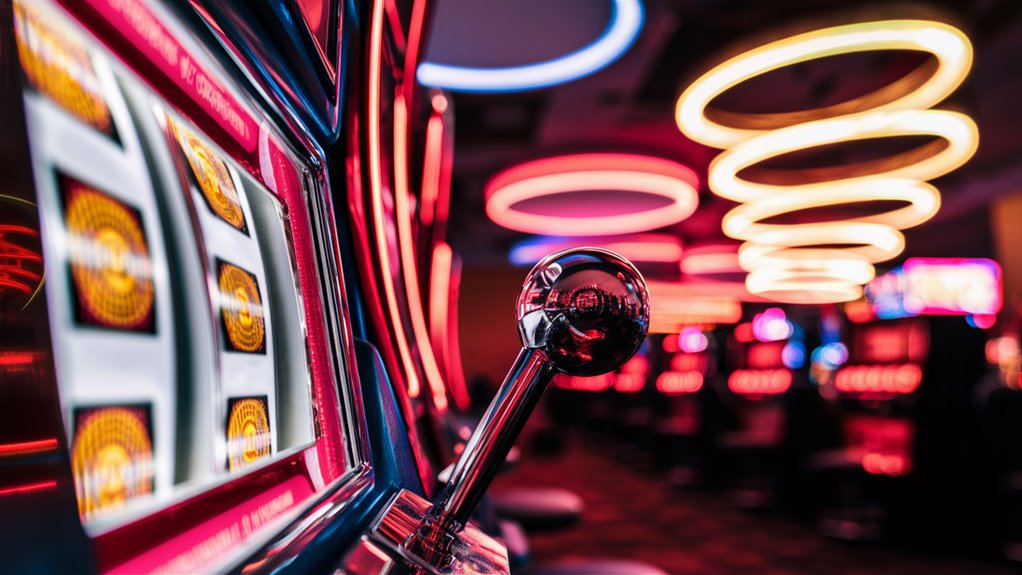
How Do Casinos Use Sensory Triggers to Affect Our Brain?
Key Takeaways
- Casino environments strategically combine light, sound, and color to activate neural reward systems
- Specific audio frequencies trigger dopamine release in the brain’s pleasure centers
- Visual stimuli like LED patterns and color schemes directly influence the ventral striatum
- These sensory cues create automatic neurological responses that bypass conscious decision-making
The Science Behind Casino Sensory Design
Casinos strategically deploy sensory triggers that activate players’ neural reward systems, particularly targeting the nucleus accumbens – the brain region responsible for processing pleasure and addiction.
This carefully engineered environment combines multiple stimuli to create an immersive experience that encourages continued play.
Audio Engineering for Maximum Impact
The casino soundscape uses specific audio frequencies proven to trigger dopamine release in the brain.
Winning sounds from slot machines are engineered at precise pitches to generate excitement and anticipation.
The ambient audio environment – from clinking coins to crowd noise – activates neural pathways associated with arousal and reward.
Visual Stimulation Techniques
The visual environment in casinos leverages:
- Rhythmic LED light patterns
- Strategic use of red and gold colors
- 게임 디자인 플레이어
- Dynamic display animations
- Calculated brightness levels
These elements work together to stimulate the ventral striatum, the brain’s reward processing center.
This strategic combination of visual cues creates powerful neurological responses that operate below conscious awareness, influencing player behavior through direct neural activation rather than conscious decision-making.
Loss Disguised as Wins
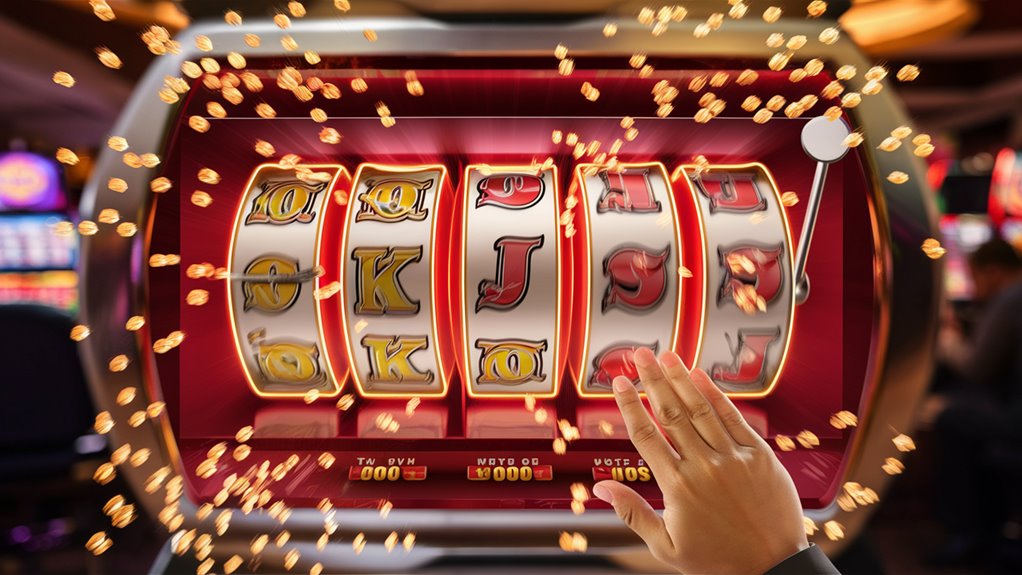
How Do Casinos Use Losses Disguised as Wins to Keep Players Engaged?
Key Takeaways
- Slot machines celebrate with lights and sounds even during financial losses
- Players experience dopamine release from small returns despite overall losses
- Casino marketing strategically showcases these “winning” moments
- LDWs make it difficult for players to track actual financial outcomes
Understanding Loss Disguised as Wins (LDWs)
Modern slot machines employ a psychological technique called “losses disguised as wins” by celebrating with lights, sounds, and animations even when players lose money.
For example, betting $1 and winning back 25 cents results in a 75-cent loss, yet the machine treats it as a victory.
The Brain’s Response to LDWs
The brain processes these near-misses and small returns as rewarding experiences, triggering dopamine release despite the financial loss.
This biological response creates an illusion of winning more frequently than actual wins occur, encouraging extended play sessions.
Marketing and LDWs
Casino advertising leverages this psychological effect by:
- Featuring celebratory moments in marketing materials
- Showcasing players experiencing these “wins”
- Omitting information about actual financial losses
- Creating emotionally satisfying experiences from losses
This sophisticated technique transforms straightforward gambling losses into positive emotional experiences, making it challenging for players to maintain accurate tracking of their financial outcomes.
Social Proof in Gaming
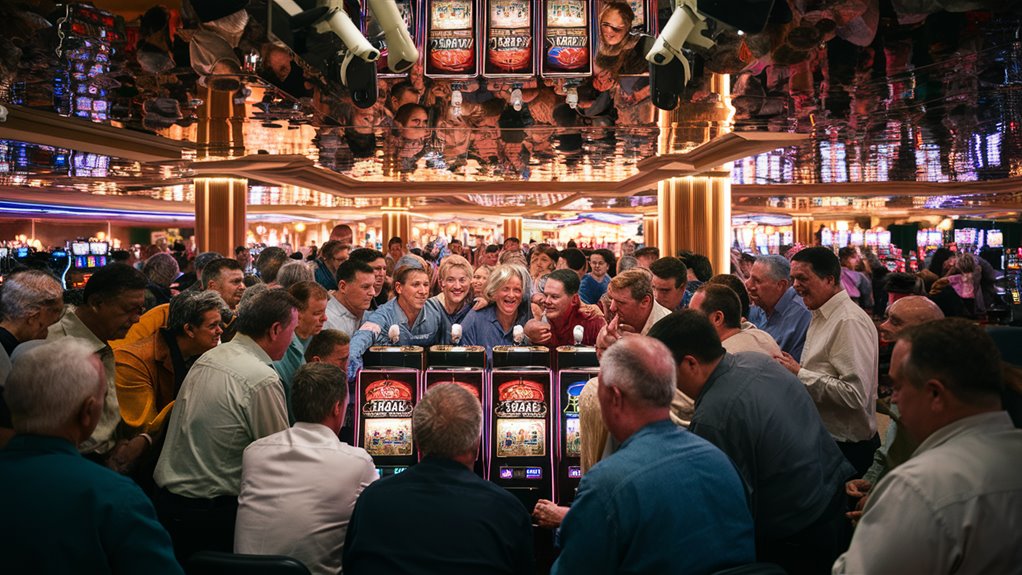
How Does Social Proof Influence Gaming Behavior?
The Psychology of Group Dynamics in Gaming
Social proof in gaming environments creates powerful behavioral triggers through crowd psychology and peer influence.
When players observe others enjoying success, it activates two key psychological mechanisms:
- Fear of Missing Out (FOMO)
- Creates urgency to participate
- Generates emotional investment
- Drives competitive engagement
- Social Validation
- Normalizes gaming behavior
- Reinforces decision-making
- Builds community acceptance
Strategic Placement and Visual Cues
Gaming environments maximize social proof through calculated design elements:
- Strategic positioning of “hot” or “lucky” gaming spots
- Visible displays of others’ wins and achievements
- Deliberate clustering of high-performing areas
These visual and social cues work together to:
- Enhance perceived winning probability
- Create psychological comfort zones
- Strengthen player confidence
The combination of group dynamics and strategic environmental design creates a self-reinforcing cycle that makes gaming experiences feel more socially acceptable and potentially rewarding to participants.
Reward Anticipation Mechanisms
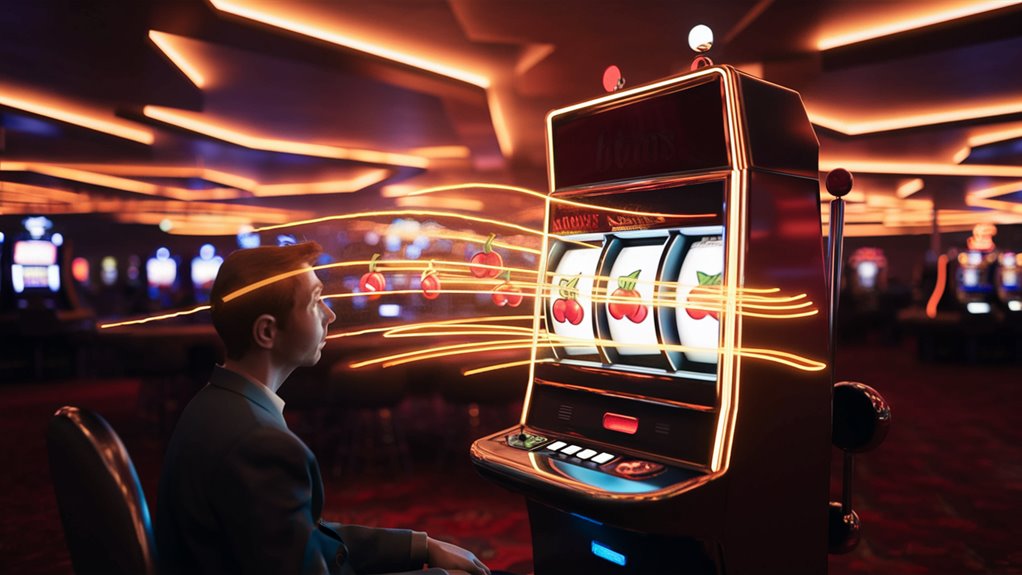
How Do Reward Anticipation Mechanisms Shape Gaming Experiences?
Key Takeaways:
- Reward anticipation triggers dopamine release through visual and auditory stimuli
- Variable reward schedules combine frequent small wins with rare large jackpots
- Strategic marketing leverages psychological triggers to enhance anticipation
- Environmental design elements amplify reward expectation
Understanding the Brain’s Reward System
Reward anticipation mechanisms activate dopamine releases in players’ brains through carefully designed casino gaming experiences.
Flashing lights, celebratory sounds, and winner imagery create powerful psychological triggers that stimulate reward anticipation before actual gameplay begins.
The Psychology of Anticipation
When casino advertising showcases near-misses or progressive jackpots, the brain’s reward system automatically activates, generating a compelling urge to participate. Slot machines exemplify this through:
- Spinning reel animations
- Musical crescendos
- Strategic pauses
- Visual excitement builders
Variable Reward Scheduling
Casino marketing leverages dual anticipation systems by highlighting:
- Frequent small wins
- Quick payouts
- Regular bonuses
- Achievement rewards
- Rare massive jackpots
- Progressive pools
- Special event prizes
- Milestone rewards
This combination proves particularly effective because it mirrors real gaming experiences, where the brain continuously anticipates potential rewards at multiple levels.
Marketing phrases like “Your lucky day awaits” and “Fortune favors the bold” reinforce these anticipatory mechanisms, creating a powerful psychological loop that drives engagement.